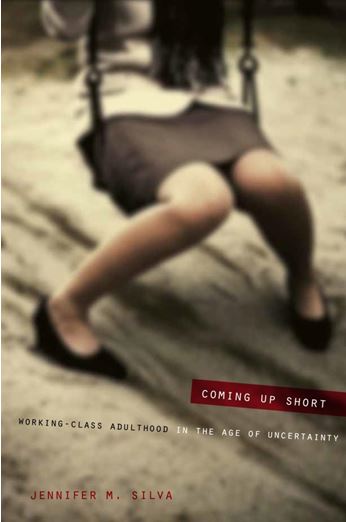The list of explorers that changed the way we see the world is vast, so we asked Stewart A. Weaver, author of Exploration: A Very Short Introduction, to highlight some of the most interesting explorers everyone should know more about. The dates provided are the years in which the explorations took place. Let us know if you think anyone else should be added to the list in the comments below.
- Pytheas of Massalia, 325 B.C.E.: The first known reporter of the arctic and the midnight sun.
The Greek geographer sailed out of the Bay of Biscay and did not stop until he had rounded the coast of Brittany, crossed the English Channel, and fully circumnavigated the British Isles. Pytheas was an independent adventurer and scientific traveler—the first, for instance, to associate ocean tides with the moon. Whether he made it as far north as Iceland is doubtful, but he somehow knew of the midnight sun and he evidently encountered arctic ice. Even conservative estimates give him credit for some 7,500 miles of ocean travel—an astounding feat for the time and one that justifies Pytheas’s vague reputation as the archetypal maritime explorer. - Abu ’Abdallah Ibn Battuta, 1349-1353: The first known crossing of the Sahara Desert
The greatest of all medieval Muslim travelers was a Moroccan pilgrim who set out for Mecca from his native Tangier in 1325 and did not return until he had logged over 75,000 miles through much of Africa, Arabia, Central Asia, India, and China. He left the first recorded description of a crossing of the Sahara desert, including the only eye-witness reports on such peripheral and then little-known lands as Sudanic West Africa, the Swahili Coast, Asia Minor, and the Malabar coast of India for the better part of a century or more. His journeys included some high adventure and shipwreck worthy of any great explorer. - Zheng He 1405-1433: China’s imperial expeditions
The “Grand Eunuch” and court favorite of the Yongle Emperor of China, Zheng He led seven formidable expeditions through the Indian Ocean. The first voyage alone featured 62 oceangoing junks—each one perhaps ten times the size of anything afloat in Europe at the time—along with a fleet of 225 smaller support vessels, and 27,780 men. With the admiral’s death at sea in 1433, the great fleet was broken up, foreign travel forbidden, and the very name of Zheng He expunged from the records in an effort to erase his example. In 1420 Chinese ships and sailors had no equal in the world. Eighty years later, scarcely a deep-seaworthy ship survived in China. - Christopher Columbus, 1492: God, gold, and glory in the discovery of the Americas
Lured by flawed cartography, Marco Polo’s Travels, the legends of antiquity, and the desire for title and dignity, Columbus weighed anchor on August 3, 1492, in search of a westward route to China and resolved, as he said in his journal, “to write down the whole of this voyage in detail.” From the Canaries, the seasoned navigator picked up the northeast trades that swept his little flotilla directly across the Atlantic in a matter of 33 days. The trans-Atlantic routes he pioneered and the voyages he publicized not only decisively altered European conceptions of global geography; they led almost immediately to the European colonial occupation of the Americas and thus permanently joined together formerly distinct peoples, cultures, and biological ecosystems. - Bartolomeu Dias, 1488: The first European to round the Cape of Good Hope
For six months, Portuguese commander Bartolomeu Dias battled his way south along the coast of Africa against continual storm and adverse currents in search of an ocean passage to India. Finally, unable to do much else, Dias stood out to sea and sailed south-south-west for many days until providentially around 40° south he picked up the prevailing South Atlantic westerlies that carried him eastwards round the southern tip of Africa without his even noticing it. The Indian Ocean was not an enclosed sea; it was accessible from the Atlantic by way of what Dias fittingly called the Cape of Storms and his sponsor, King João of Portugal, named the Cape of Good Hope. - James Cook, 1768-1779: The Christopher Columbus of the Pacific Ocean
James Cook did not in any sense “discover” the Pacific or its island peoples. But he was the first to take full measure of both, to bring order, coherence, and completion to the map of the Pacific, from the Arctic to the Antarctic, and to disclose to the world the broad lineaments of Polynesian cultures. His voyages set a new standard for maritime safety and contributed decisively to the development of astronomy, oceanography, meteorology, and botany and to the founding, in the next century, of ethnology and anthropology. They also did much to integrate Oceania into modern systems of global trade even as they stimulated a fondness for the primitive and the exotic.

Born in a one-room tenement in Scotland, this most famous of 19th century explorers had gone to Africa as medical missionary in 1841, but Livingstone’s wanderlust ran ahead of his proselytizing purpose. His sighting of the Zambezi river in June 1851 encouraged a vision of a broad highway of “legitimate commerce” into regions still blighted by the slave trade, and one year later he returned to explore its upper reaches, with the indispensable guidance and cooperation of the indigenous Makololo and other tribes. In May 1856, after years of harrowing travel, he became the first European to traverse sub-Saharan Africa from coast to coast
Starting in the winter of 1866, Nain Singh began a two-year trek across the Himalayan Mountains. Known to his British employers as “Pundit No. 1,” Singh surveyed the height and positions of numerous peaks in the Himalayan range, and many of its rivers during his 1,500-mile trek. Recognized by the Royal Geographical Society on his retirement in 1876 as “the man who has added a greater amount of positive knowledge to the map of Asia than any individual of our time,” Singh provided Western explorers the tools to navigate on their own, rather than to rely on local guides.
During his three-year journey through the Northwest Passage beginning in 1903, Roald Amundsen learned to adapt to harsh polar conditions. The Norwegian learned to ski, appreciated the essential role of dogs in polar travel, and adapted to some native Inuit practices. Above all, learning to think small—in terms of ship size and crew—and to travel light , helped him beat his rival explorer, Englishman, Robert F. Scott to the South Pole by over a month. Scott, who considered Amundsen an interloper with a passion for chasing records, died with his four-person crew eleven miles short of their food depot.
A Prussian geographer, naturalist, and explorer whose five-year expedition through Latin America cast him as a “second Columbus.” Humboldt confirmed the connection of two river systems, the Amazon and the Orinoco, and is most noted for his attempt to climb Chimborazo, then mistakenly thought to be the highest peak in the Americas. A crevasse stopped his team just short of the summit, but at 19,734 feet, they climbed higher than anyone else on record. Sometimes reviled as an example of the explorer as oppressor, one whose travel writing reduced South America to pure nature, drained it of human presence or history, and thus laid it open to exploitation and abuse by European empires, Humboldt has more recently been recovered as an essential inspiration of modern environmentalism.
Bjarni Herjolfsson accidentally triggered the European discovery of America in about 985 when he was blown off course while en route from Norway to Greenland. His adventure stirred an exploratory spirit in his countrymen. Fellow Norseman Leif Eiriksson had no known destination in mind when he set out across the North Atlantic in the year 1001. He sought something new, found it, occupied it, and then returned to tell others. While his journey from Greenland to the “new world” occurred roughly five hundred years before Columbus, it was not immediately celebrated in print and made no lasting cultural impression. Still, Leif’s landfall in “Vinland” led to the first attempt at a permanent European settlement in the Americas at L’Anse aux Meadows, Newfoundland.
Featured image: “Hodges, Resolution and Adventure in Matavai Bay” by William Hodges. Public Domain via Wikimedia Commons.
The post The 11 explorers you need to know appeared first on OUPblog.









